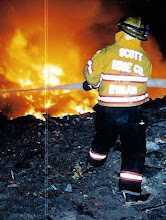Highly quotable, many of his pronouncements in the
area of leadership and others are applicable to the fire service. With just a few paraphrasing liberties, here
are some of my favorites.
“I don’t lose any sleep at night over the potential
for failure. I cannot even spell the
word.”
“Fight with a happy heart and a strong spirit.”
“You cannot allow any of your people to avoid the
brutal facts. If they start living in a
dream world, it’s going to be bad.”
“Powerpoint makes us stupid.”
And if you remember none of the others, keep in mind
the most valuable one.
“The most important six inches on the [fire ground]
is between…your ears.”





